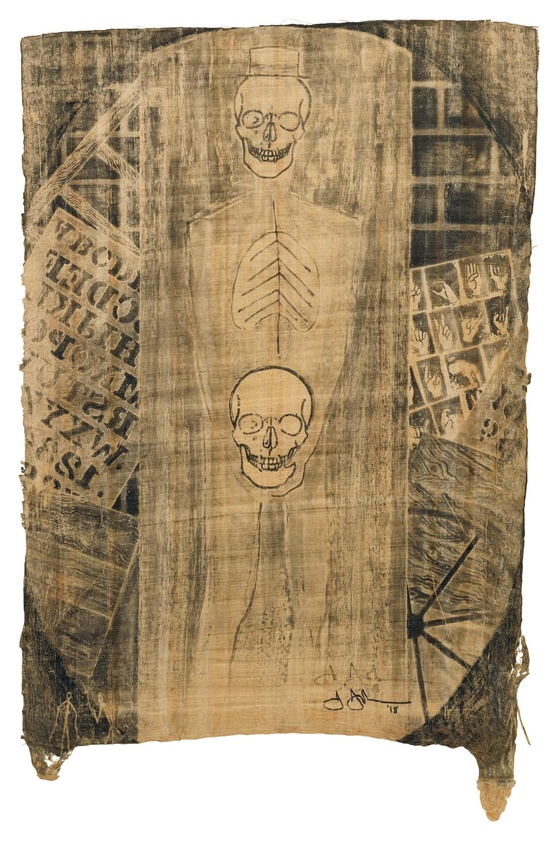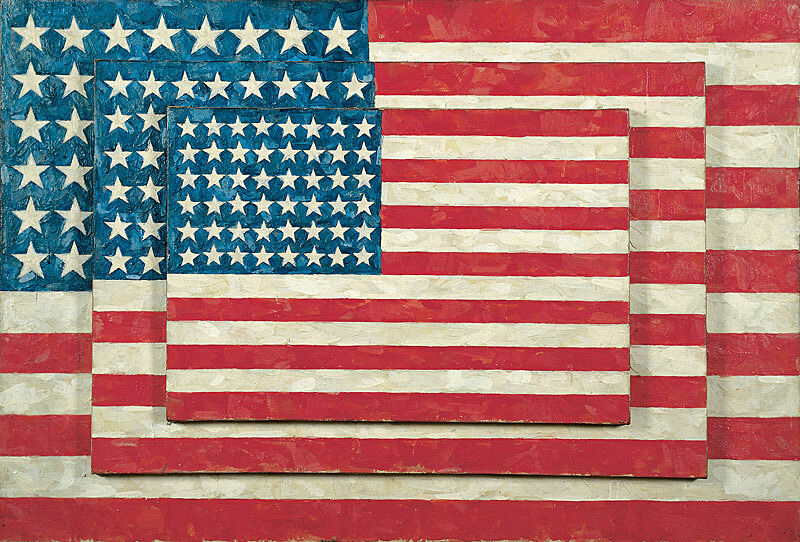Dancers on a Plane
Sept 24, 2021
0:00
Dancers on a Plane
0:00
Narrator: In Dancers on a Plane, Johns made vibrant use of a red, yellow, and blue crosshatch pattern.
Scott Rothkopf: He remembers that he originally saw this shape or pattern on a car that was passing him on the road. It caught his attention and became something he used again, and again. Here, if you look closely at the painting, you see there’s a central vertical seam from the top to the bottom, that creates a line. The painting mirrors itself across this scene. That’s called bilateral symmetry. It’s actually pretty common. People are mostly bilaterally symmetrical, animals, a lot of plants. This painting appears in this gallery about mirroring and doubling, because it shows Johns’s interest in the very process of mirroring. How, in some cases, the mirror creates a perfect reflection.
The painting is called Dancers on a Plane, and it’s dedicated to Merce Cunningham, who was a great dancer, choreographer, and friend of Jasper Johns. If you look at this painting and imagine the way that it invokes the human body, by that early symmetrical figure at the center, you get a sense of movement, a liveliness, a sense maybe of dancing, that the marks are responding to one another, to us as we look at them.


